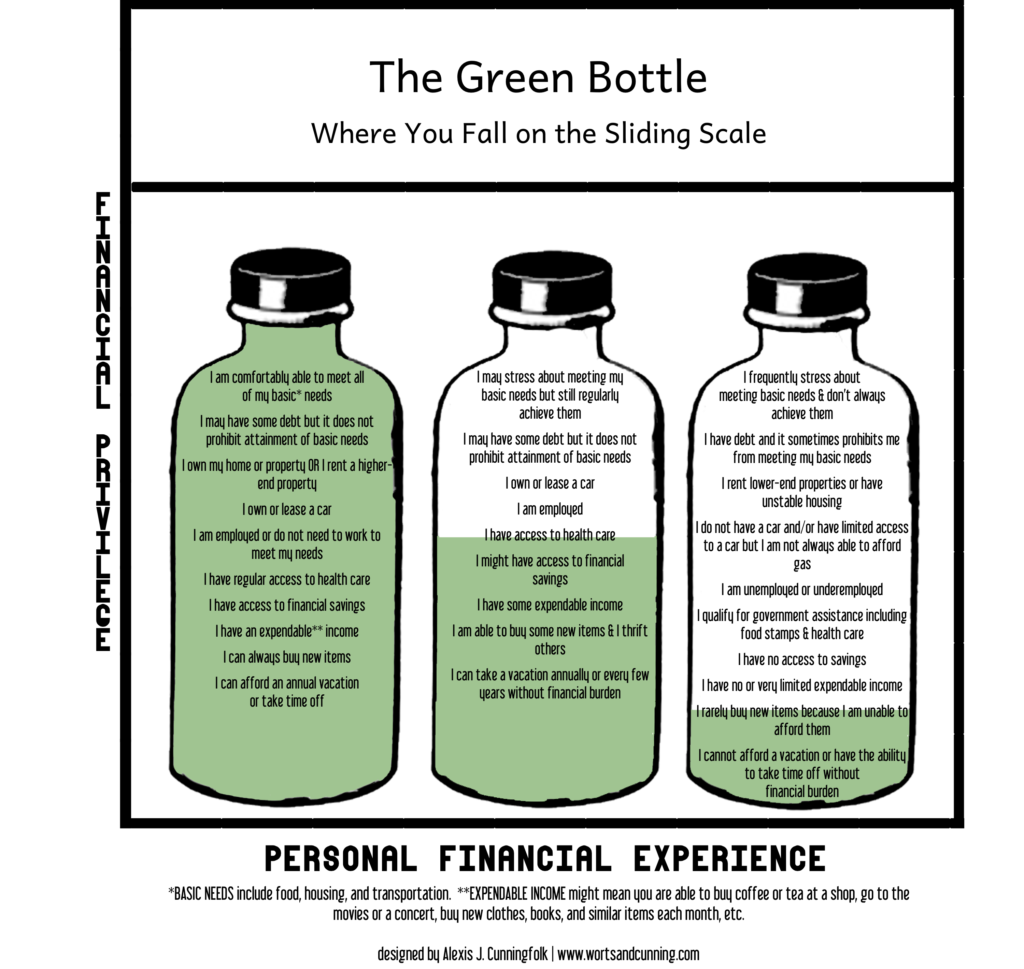Yoga Outreach is trying out sliding scale payments for our exciting new Knowledge Development series in Vancouver beginning fall 2019. That means folks will have three options at check-out for each course:
Tier 1 – Pay the true cost of the class, including the facilitator’s time, the facility, and administrative costs. This is what we would charge all students in the absence of a sliding scale.
Tier 2 – Pay this amount if you can’t attend at the full price, but you have a steady enough income to cover your basic needs, plus a few treats each month. Please consider drawing from your personal resources when possible, as Tier 2 spots are limited.
Tier 3 – Pay this price if your economic reality includes precarious, under, or non employment. When you choose this option, we appreciate that this is a significant allocation from your budget. There are fewer tickets available at Tier 3, so please select thoughtfully.
When the lower tier is still prohibitive, we will work with folks to offer extended payment plans and other solutions.
Why Try a Sliding Scale?
Setting the price for our offerings takes up a LOT of discussion time.
On one hand, we’re incredibly selective about the facilitators we work with. Only the very best in cultural analysis of trends, credentials, experience, and effort!
On the other hand, high-calibre workshops can exclude delightful folks with enthusiasm for learning, simply because they can’t afford it.
Since Yoga Outreach’s mandate is increasing yoga accessibility for marginalized folks, excluding for lack of economic privilege feels wrong.
So how do we appropriately value our workshops without de-valuing those with lower incomes?
Hardship versus Sacrifice – A Scale by Worts and Cunning
 We discovered this awesome sliding scale description on the website of Yoga Outreach supporter Monique D., and traced it back to Alexis at Worts and Cunning (who freely shares this useful graphic with anyone who asks).
We discovered this awesome sliding scale description on the website of Yoga Outreach supporter Monique D., and traced it back to Alexis at Worts and Cunning (who freely shares this useful graphic with anyone who asks).
It’s useful because it provides descriptions of the financial lifestyle you’d have depending on your category. Think of it as a mini-quiz about financial privilege.
For instance #1 – a person in the top tier takes an annual vacation or time off without any financial burden. A person in the middle may only afford holidays every few years. While a person in the lower tier cannot afford time off without financial burden.
For instance # 2 – A top tier person has extra money available each month for coffees and meals out, a movie, or new clothes. A person in the middle buys some new items and thrifts others. A person in the lowest tier doesn’t have expendable income for treats.
Decide which tier you belong in based on your actual behaviour, rather than by internalized stereotypes about privilege, occupation, or neighbourhood. For example, you may be a lawyer in Kitsilano, but saddled with serious debt that prevents you from owning a car or property. So you could be in the middle tier.
On the flip side, you might assume that since you’re price checking at Costco, Superstore, and Save-On, you belong in the middle or bottom tiers. But if you order take out when you don’t feel like cooking, or go out for pints or smoothies when you feel like socializing, then you’re probably in Tier 1.
Make sense?
What are we really talking about with Sliding Scale?
Class. Money. Access.
Who has more money? Who has less? Often we can’t know, because it’s poor manners to talk about money in Canadian culture.
Even though we always offer scholarships for folks with financial hardship, people rarely contact us for affordable places. Possibly people at lower incomes are not interested in our offerings. But, more likely, people feel awkward asking for a discounted rate.
And that’s a real shame, because we love having a mix of folks in our courses. Part of the value is the group dynamic. Attendees learning from each other, as well as the teacher. And that requires different perspectives – sometimes because of race, gender expression or ability – and sometimes because of income level.
For example:
How do wealthy, well-educated people experience racism?
How do people who rarely have extra funds for a vacation experience boundary setting?
How is mental health different depending on your type of employment?
A discussion wouldn’t be nearly as eye-opening without perspectives from people with relevant experience.
Sliding Scales are Based on Trust
“For a sliding scale to work it relies on the principles of truthfulness, respect for complexity, and accountability. I do not ask for income verification. I trust my students and clients to be honest. Community thrives when accountability is a central value, because that is where trust grows and depth work can be done. Teachers deserve to get paid and students deserve classes which recognize the multiple realities of economic access and privilege that exist.” –Alexis J. Cunningfolk
So when you’re signing up for one of the fabulous courses in our Knowledge Development series, take a moment to determine which tier you really belong to. We’ll be grateful, and so will our facilitators, your fellow classmates, and the people Yoga Outreach serves.
Ready to get started with Yoga Outreach’s sliding scale? Check out all the fabulous workshops in our year-long Knowledge Development series.
